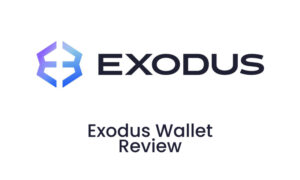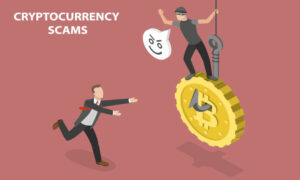Does Crypto Really Need Institutional Investment?
Institutional investors are professional speculators. This is why Satoshi wanted to remove them from the equation when he created Bitcoin. Now it seems that they are keeping BTC prices low

Much has been written about the need for institutional investment in crypto, particularly in terms of injecting liquidity to the market, and increasing adoption. Institutional investment would “prove” that these new currencies can offer the types of financial products and services that traditional markets are looking for. This is not without substance – after all, how useful is any form of money or currency if it cannot be used in the exchange of goods and services. On the other hand, the cypherpunk movement and Bitcoin emerged to counter the existing financial system, the blunders of fractional reserve banking and Wall Street. Satoshi Nakamoto and other cypherpunks were definitely not thinking about Bakkt futures when Bitcoin was launched, and they started advocating for decentralization.
Bitcoin and other cryptocurrencies don’t need institutional investors; they need adoption. There is an increase in adoption worldwide without the involvement of institutional investors, who are just looking for fiat profit. There are more vendors accepting Bitcoin payments as well as payments denominated in other altcoins. There are more Fiat-to-crypto and crypto-to-fiat payment solutions, and exciting new developments like the Lighting Network and MimbleWimble.
A Threat to an Existing System
A crypto YouTube channel accurately questions why, if Bitcoin and other cryptocurrencies challenge the dollar and Wall Street, would institutional investors be interested in supporting crypto? In particular, it points out that Bakkt, a supposed bitcoin futures contract to be delivered in “physical” BTC and whose owners own the NYSE and ICE, does not seem to have a mechanism to deliver BTC once a contract is executed. The interlocutors on this YouTube channel argue that it all seems like a way to accumulate BTC without ever settling a contract in BTC.
Comments by notable figures like CME Group’s CEO Leo Melamed may lend some credence to traditional finance institutions attacking crypto. His recent statement to Reuters in an interview, delineates clearly what institutional investors are after. Melamed said that “we will regulate, make bitcoin not wild, nor wilder. We’ll tame it into a regular type instrument of trade with rules.”
Derivative Distort Bitcoin Prices
Beyond this speculation, however, is the argument that derivatives have an impact in distorting the market. If traditional finance wants to attack BTC, it could very well do so by introducing derivatives. The Federal Reserve Bank of San Francisco has even suggested the price crash of 2018 could be due to the release of CME bitcoin futures which are settled in cash:
We suggest that the rapid rise of the price of bitcoin and its decline following issuance of futures on the CME is consistent with pricing dynamics suggested elsewhere in financial theory and with previously observed trading behavior. Namely, optimists bid up the price before financial instruments are available to short the market (Fostel and Geanakoplos 2012). Once derivatives markets become sufficiently deep, short-selling pressure from pessimists leads to a sharp decline in value.
How Market Distortions Keep the Price Artificially Low for BTC’s Predecessor: Gold
A look into gold helps perceive how institutional investment could potentially distort the Bitcoin market. In short, a single entity (ICE benchmark administration, composed of several banks, an oversight committee, and a panel of internal and external chair members), has the rights to the process of fixing the price of gold. As SBC gold puts it: traders primarily use two pricing models to estimate the potential investment value of gold:
- Gold Futures Price – Gold futures prices serve as the basis for the LBMA Gold Price. These are contracts for the physical delivery of a specified amount of gold on a set date in the future. Multiple factors determine the price of a gold futures contract: the spot price of gold; the predicted changes in supply of and demand for the precious metal; the estimated cost of transporting and storing the physical gold; and the risk-free rate of return for the holder of the gold. Since the physical gold is not immediately delivered upon purchase, these trades are primarily electronic. They’re also highly risky because of the unpredictable nature of supply and demand factors.
The COMEX is the world’s largest gold futures trading exchange. Gold and other precious metals are also traded there.
- Gold Spot Price – The price of gold that is to be delivered immediately after purchase is called the spot price. If you were to average the net value of all currently traded gold futures contracts for the nearest month, you would get the gold spot price. In a normal market, gold futures prices are much higher than the spot price of gold. However, in times of extraordinary demand for physical gold, the spot price can be higher than the futures price.
The distortion of the actual price occurs because when a derivative is created it diverts supply and demand from the underlying commodity. In the case of gold institutional investors have absorbed physical demand by continually running net short positions, which prices overall than would otherwise be the case.
The New Gold Standard
If Bitcoin actually threatens to become the new gold for a decentralized economy, it is easy to think that those who have benefitted from the fall of the gold standard to seek to “tame” it in similar ways to the ones they have used on gold. If anything, it is institutional investors that see (or don’t, yet) the need to enter the Bitcoin market to distort it in an attempt to downplay its true value. What they need is to recognize the future of the economy is no longer in their hands; the new economy doesn’t need them.







